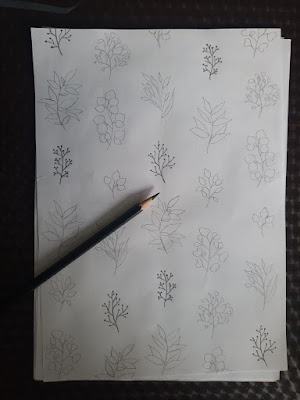DESIGN PRINCIPLES - WEEK 3: REPETITION, MOVEMENT, HIERARCHY & ALIGNMENT
Rifath Ali (0335738)
Design Principles
Exercises
LECTURE NOTES
Lecture 03: Repetition, Movement, Hierarchy & Alignment
This week we looked into another 4 design principles.
Repetition can be used to make a work of design look active. The repetition of elements of design creates rhythm and pattern.
Fig. 1.01: Repetition
Fig. 1.02: Repetition
Movement is how a design leads the eye in, around, and through a composition. Motion or movement in a visual image occurs when objects seem to be moving in a visual image. It can be achieved by shapes, forms, lines, and curves as well.
Fig. 1.03: Movement
Fig. 1.04: Movement
Hierarchy is the choreography of content in a composition to communicate information and convey meaning.
Fig. 1.05: Hierarchy
Fig. 1.06: Hierarchy
Alignment is the placement of elements in a way that edges line up along common rows or columns, or their bodies along a common center. It creates a sense of unity and cohesion.
Fig. 1.07: Alignment
Fig. 1.08: Alignment
INSTRUCTIONS
Exercises: Repetition & Movement
Part A: Repetition
I started off by looking up few inspirations for my design. What I had in mind was on the theme of plants.
Fig. 2.01: Repetition; Inspiration 1
Fig. 2.02: Repetition; Inspiration 2
I decided to design a wallpaper similar to Fig. 2.02. I created two digital designs and showed Miss Anis and she approved both.
Fig. 2.03: Repetition; Digital Design 1
Fig. 2.04: Repetition; Digital Design 2
As I preferred the second design, I traced it on plain paper.
Fig. 2.05: Repetition; Process 1
After tracing, I used color pencils to fill up the drawings.
Fig. 2.06: Repetition; Process 2
Fig. 2.07: Repetition; Process 3
Fig. 2.08: Repetition; Process 4
Part B: Movement
Keeping the plant theme in mind, I decided to draw a vine for the principle of movement.
Fig. 2.09: Movement; Process 1
Fig. 2.09: Movement; Process 2
When I consulted with Miss Anis, she said she liked the design and that it fits the principle well. I drew the sketch on another paper and used color pencils to fill up the design. I tested out the colors I wanted to use for light to dark shades.
Fig. 2.10: Movement; Process 3
Fig. 2.11: Movement; Process 4
Fig. 2.12: Movement; Process 5
Fig. 2.13: Movement; Process 6
Fig. 2.14: Movement; Process 7
As the artwork looked a bit too monochromatic, I decided to give it a bit of shades of black.
Fig. 2.16: Movement; Process 9
Final Artwork
Repetition
Fig. 2.17: Repetition, Final Artwork; Plant Wallpaper
Movement
Fig. 2.18: Movement, Final Artwork; Adansonii Vine
FEEDBACK
I got positive feedback on both designs this week. I was told for both tasks the sketches were good and to go with whichever one I preferred.
REFLECTIONS
Always thought creating patterns with repetition was easy. But during this week I realized the aspects of it and to think from different angles in order to make the design cohesive. While doing the artwork for movement, I learned a lot about using color pencils and how to use light and shades.




























Comments
Post a Comment